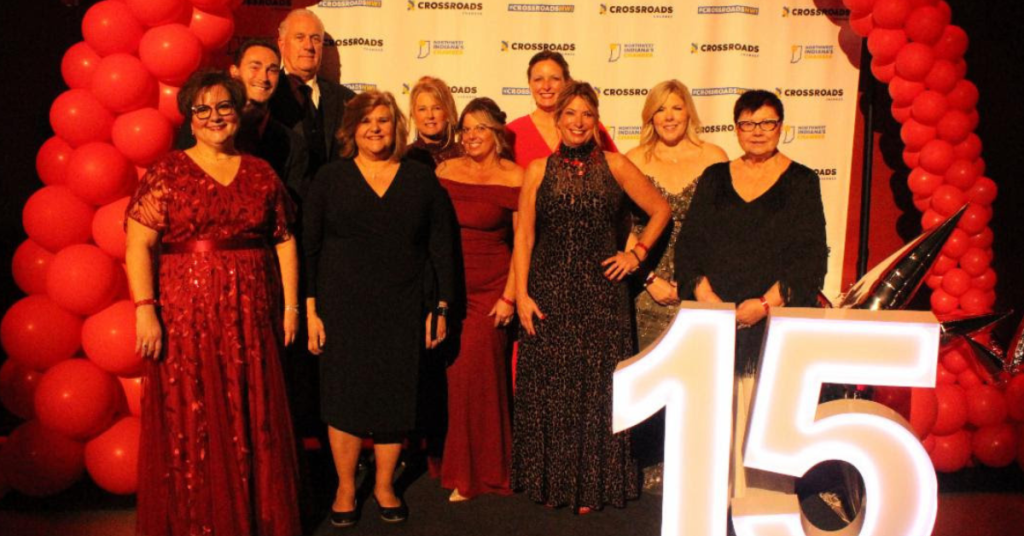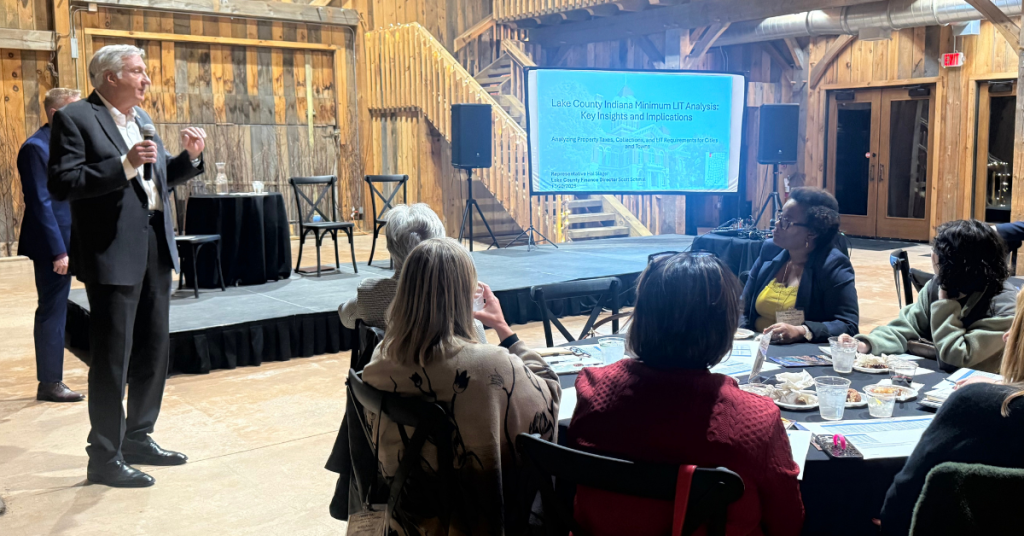Indiana’s influential Chamber of Commerce on Aug. 7 released its third long-term economic plan for the state — two years ahead of schedule, and as both Indiana and the chamber itself prepare for major leadership changes.
The ambitious vision seeks to advance workforce, education, business climate, infrastructure, quality of place and health initiatives.
“Indiana Prosperity 2035 is more than just an update to a prior plan. It’s a new vision with a goal of accelerating the move of Indiana’s economy to an even greater high,” chamber board chair Paul Perkins said at a virtual news conference Aug. 8. He’s also president of Amatrol Inc., a technical education provider.
The organization’s previous plan was set to extend through 2025. But longtime chamber President and CEO Kevin Brinegar said board and staff members decided to “pivot” in 2020, during the pandemic-induced “tremendous upheaval in our economy.”
The 20-page document will guide the chamber’s advocacy work with policymakers and others, Brinegar said. That includes the state’s next governor.
Brinegar said his team would ask each declared gubernatorial candidate “for the opportunity to go through it with them, to encourage them to embrace it and adopt as much of it as they see fit.” The general election is November 2024.
The 12-year plan also comes as Brinegar is on his the way out. He’s set to retire in January 2024 after 31 years with the chamber.
Goals run the gamut
Forty policy experts, business leaders and others spent 18 months putting the latest plan together, which focuses on similar pillars as in the past: workforce, education, business climate, infrastructure, quality of place and health.
But Brinegar said the goals within each area had changed.
In workforce, for example: over the last decade, the percentage of Hoosiers with a postsecondary credential rose from 32% to 54%, according to the chamber. Now, the organization wants to aim for 70%.
“I am optimistic that (even) if we don’t quite get there, we’re going to be close, and we’re going to be better served for having had this goal to work towards since 2012, and continuing on into the future,” Brinegar said.
The chamber also hopes to see double the number of Hoosiers with STEM-related postsecondary credentials by 2035, and more with bachelor’s degrees. It additionally wants the state to keep more college graduates, especially international students with STEM degrees, and to get workforce participation from 63% to 70%.
Higher participation would fill the 100,000 jobs open statewide, Brinegar said.
“To do this we have to lift up the skills of the folks at the lower end of the education attainment level,” he said. “It’s unacceptable to have 60% of our high school dropouts not in the workforce. We’ve got to get them off the sidelines and onto the playing field.”
In education, the chamber said it wanted more Hoosier students proficient in math and English, higher graduation rates — not counting waivers — and publicly funded pre-kindergarten programs accessible statewide. Brinegar also highlighted a desire to consolidate small school districts.
Lawmakers have already fulfilled one goal, with recent legislation enabling automatic enrollment of qualifying students into the 21st Century Scholars program.
When it comes to business, the chamber offered congratulations on the state’s “competitive business and regulatory environment” but said the state should focus on some investment, entrepreneurship, productivity, patent and intellectual property metrics.
“It is so important for us to be successful in this area (entrepreneurship), because we have to grow our own,” said volunteer task force chair Larry Gigerich, who also leads economic development group Ginovus. “Indiana is not likely to be a state where we’re going to get a lot of headquarters to relocate here. It’s just not something that is is necessarily a perfect fit for us.”
In infrastructure, the chamber announced goals of high speed communication connectivity for all and carbon neutral targets. Lawmakers have already taken action on two other goals: a state energy strategy and a road improvement program.
But water and wastewater needs still need to be addressed.
“We’ve seen the struggles that have happened in the Boone County area with the LEAP district, which was laid out — but perhaps not enough thought (was) given to where the water for these massive manufacturing and laboratory facilities was going to come from,” Brinegar remarked.
The chamber highlighted quality of place initiatives to help retain and attract more residents, as well as water, air quality and affordable housing goals. Though the state has gained population overall, Indiana’s smallest communities are losing people.
And finally, on health, the chamber hoped to lower smoking and addiction levels, “contain” health care costs and boost civic engagement.
“The cost in loves, lost futures and lost productivity is simply staggering,” the report notes. “… Indiana’s unhealthy population is a drag on economic growth and a tremendous cost to taxpayers.
Tracking metrics
Brinegar said the chamber would release its first baseline report card this fall, and would likely continue releasing them on a biennial basis.
Indiana’s business community, philanthropic community and governmental entities are most effective when they are aligned, Gigerich said. And he advocated for all to resource the plan and “seize this opportunity.”
“We cannot afford to be complacent,” he said.
This story originally was published by the Indiana Capital Chronicle, which is part of States Newsroom, a network of news bureaus supported by grants and a coalition of donors as a 501c(3) public charity. Indiana Capital Chronicle maintains editorial independence. Follow Indiana Capital Chronicle on Facebook and Twitter.




